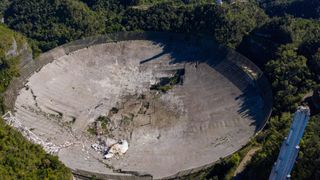Markets for forest products respond to technology
New Southern Forest Outlook report now available
Asheville, NC — Technology is changing every facet of the forest products market. That may mean fewer jobs in the future as the industry shifts to labor-saving technology, with the steepest declines in the pulp and paper sector, according to a new report released by the USDA Forest Service’s Southern Research Station and Southern Region, as well as the Southern Group of State Foresters.
“From how trees are cut, to how they are processed at sawmills, and every step in between, technology is changing the industry,” said Forest Service scientist Jeff Prestemon who specializes in forest economics. “Researchers are partnering with the forest products industry to find ways to recycle and use materials that typically would be discarded as waste.”
Prestemon co-authored the report – Markets in the Southern Forest Outlook – with economist Jinggang Guo from Louisiana State University.
The new report analyzes six scenarios for the future and how each might impact the forest products markets in the South. The analysis considers how changes in income, population, climate, technology, and trade openness could affect markets.
The report also found:
- The South is projected to continue to be a net exporter of forest products.
- Prices of industrial roundwood are projected to rise, reversing recent downward trends.
- If mass timber were more widely used, the southern softwood market would strengthen.
- Additional trade barriers would enhance softwood exports and reduce hardwood exports.
- Most scenarios project a growth in wood pellet production in the South.
The report is part of a regional assessment, known as the Southern Forest Outlook. Its goal is to inform forest sector decision makers and the interested public about observed trends, anticipated futures, and critical issues based on authoritative synthesis and interpretation of existing science, data, and projections. This is the first of four reports that will be released in the coming months. A report on water is expected next month.
For decades, Forest Service scientists have conducted region-wide assessments of natural resources in the South. In fact, results from past assessments were used to develop research priorities for the Southern Research Station, including fire, water, markets, and restoration. The Southern Research Station and the Forest Service’s Southern Region work closely with the Southern Group of State Foresters, and the results of the markets report are organized by state.
The Southern Forest Outlook relies on the same core scenarios as the 2020 Resources Planning Act Assessment, which in turn relies on climate projections developed by the 2014 Intergovernmental Panel on Climate Change. The four main scenarios vary along two axes: high, moderate, or low amounts of economic growth and warming. The research team modified two scenarios to explore how markets would be affected if mass timber became more widely used in construction and if existing forest product trade restrictions were tightened.
“Wood is actually a new trend in sustainable building,” said Prestemon. “Mass timber, as it’s called, is produced to be strong enough to replace concrete or steel. If mass timber continues to catch on, then the South’s softwood market would grow.”
In all scenarios, the number of jobs across forest product sector is projected to decline. The steepest declines are projected for the paper manufacturing sector, due to labor-saving technologies and reduced demand for newsprint and printing and writing paper. The pulp and paper sector also includes packaging and sanitary papers, which is closely related to economic growth and are generally not projected to decline, and wood pellets. Wood pellet production is projected to rise across all southern states except in the scenario that combines high warming and low economic growth. The chapter also includes a section on the market effects of the COVID-19 pandemic.
The new report builds on the Southern Forest Futures Project, which was completed in 2012. Since then, the southern forest products sector has experienced significant changes including rising timber inventory, declining softwood timber prices, increased barriers to international trade, and continued contraction of the forest sector workforce despite growth in production.
---
About Us
The Southern Research Station, headquartered in Asheville, N.C., is comprised of more than 100 scientists who conduct natural resources research in 20 locations across 13 Southern states, from Virginia to Texas. The station’s mission is to create the science and technology needed to sustain and enhance southern forest ecosystems and the benefits they provide. Learn more about the Station.
The Forest Service’s Southern Region oversees 14 national forests and two special units in 13 states and Puerto Rico, working with states and private landowners to sustain the health, diversity and productivity of forests and grasslands to meet the needs of present and future generations. Learn more about the Southern Region.
The Southern Group of State Foresters represents state forestry agencies within the 13 Southeastern U.S., and the U.S. territories of Puerto Rico and the Virgin Islands. Its members collectively provide leadership, coordination, expertise and resources to sustain the economic, environmental, health and societal benefits of Southern forests. Learn more about the Southern Group of State Foresters.
Method of Research
Computational simulation/modeling
Subject of Research
Not applicable
Article Title
Markets: An Analysis to Support the Southern Forest Outlook
Article Publication Date
14-Nov-2024






